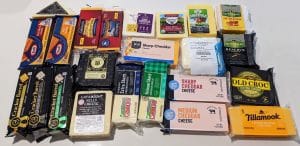Sirene Cheese: The Exquisite Taste You Need to Try & How to Find It
Important Note: When you buy through our links, we may earn a commission. As an Amazon Associate we earn from qualifying purchases. Content, pricing, offers and availability are subject to change at any time - more info.
Let me tell you a story. As someone with a Bulgarian significant other, I’ve been lucky enough to explore the incredible world of Bulgarian cuisine. And among the many scrumptious dishes I’ve tried, there’s one that stands out above all others: Sirene cheese. Now, I might be a little biased, but trust me when I say that Bulgarian Sirene is simply the best.
Sirene (сирене) is a traditional Bulgarian white brined cheese that’s been enjoyed in the region for centuries. Its origins can be traced back to the Thracians, who lived in the Balkan Peninsula around 4,000 years ago. Made primarily from sheep’s milk or a mixture of sheep’s and cow’s milk, Sirene boasts a unique flavor profile that ranges from mild to tangy, depending on the type and age of the cheese.
Often compared to its Greek cousin Feta, Sirene has a distinctive texture and taste that sets it apart. Slightly crumbly yet creamy, it’s the kind of cheese that instantly transports your taste buds to the rolling hills and sun-soaked pastures of Bulgaria.
So, buckle up, cheese lovers! It’s time to embark on a mouthwatering journey to discover the ins and outs of Sirene cheese and, more importantly, how to get your hands on some in the US.
The Irresistible Charm of Sirene: What Sets Bulgarian Sirene Apart?
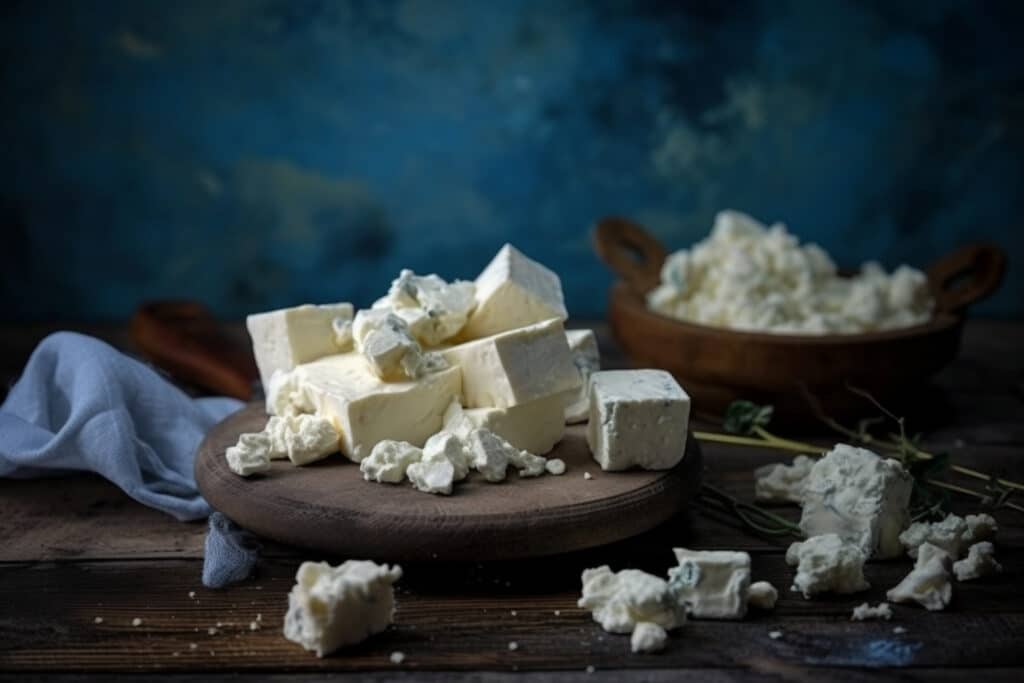
If you’ve ever wondered what makes Sirene cheese so special, then you’re in for a treat! This delightful cheese has several unique characteristics that set it apart from other brined cheeses. Here’s the lowdown on what makes Sirene a true Bulgarian treasure:
- Texture: Sirene cheese has a distinct texture that’s slightly crumbly, yet creamy and smooth. This delightful combination makes it incredibly versatile – perfect for crumbling over salads, spreading on bread, or enjoying as a standalone snack.
- Flavor: The flavor of Sirene can vary from mild and milky to sharp and tangy, depending on factors like the type of milk used, the production process, and the cheese’s age. But one thing’s for sure: once you’ve tasted Bulgarian Sirene, you’ll never forget its delectable, unique flavor.
- Milk: While many brined cheeses are made exclusively from cow’s milk, Sirene cheese can be crafted from a variety of milk types, including sheep’s, cow’s, and even goat’s milk. This variety lends the cheese its wide range of flavors and textures, which can be adapted to suit any palate.
- Tradition: The art of making Sirene cheese has been passed down through generations of Bulgarian cheese-makers. This rich history and time-honored tradition are deeply intertwined with the country’s culture, making Sirene a symbol of Bulgarian heritage and pride.
So, there you have it! Sirene cheese is a culinary gem with a unique blend of texture, flavor, and tradition that’s sure to tantalize your taste buds. And while I might be a tad biased, I truly believe that Bulgarian Sirene is the crème de la crème of the cheese world. Now, let’s explore how this delightful delicacy is created!
Crafting Perfection: The Art of Making Sirene Cheese
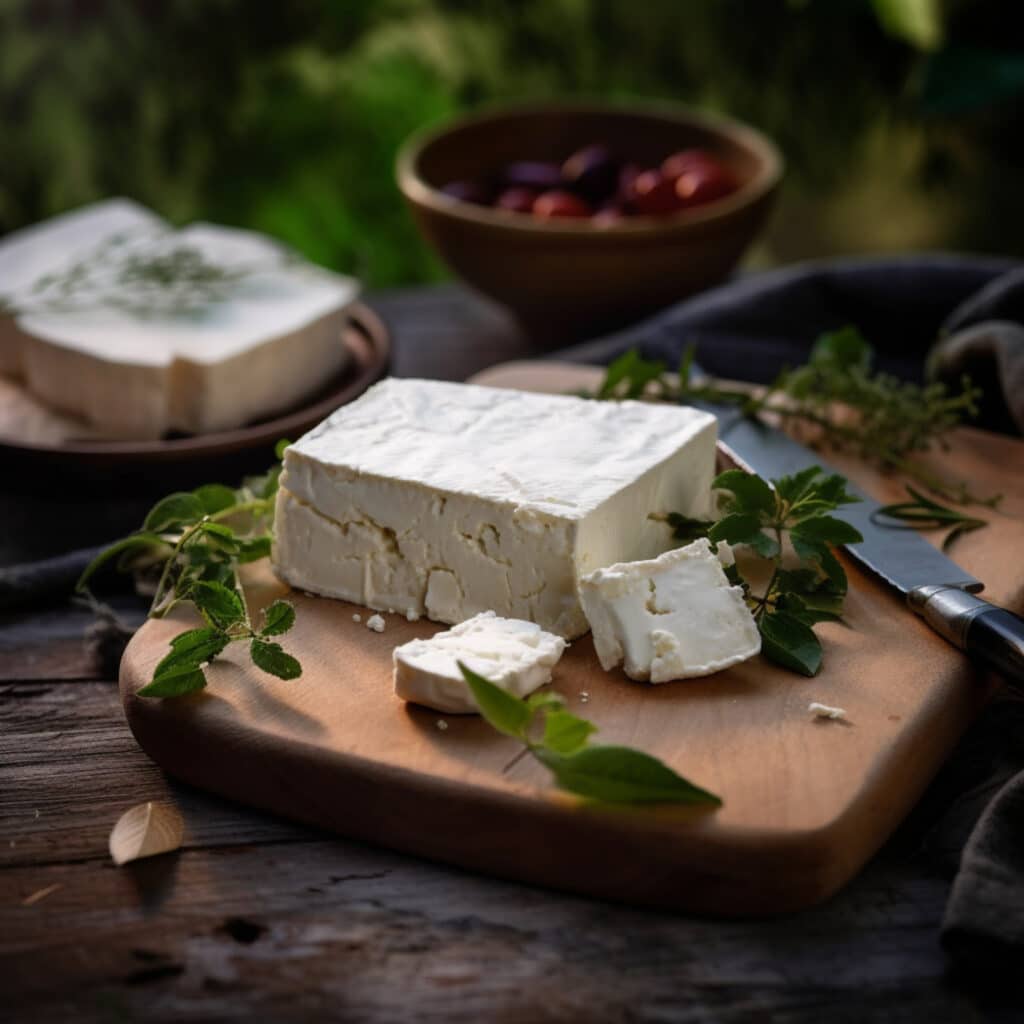
Now that we’ve established just how amazing Sirene cheese is, let’s delve into the fascinating world of Sirene production. The art of making this delectable cheese has been passed down through generations of Bulgarian cheese artisans, and the process is nothing short of magical.
- Milk Selection: The journey begins with choosing the right milk. Depending on the desired flavor and texture, Sirene can be made from sheep’s, cow’s, or even goat’s milk. It’s not uncommon to find blends of these milks, which give the cheese its unique characteristics.
- Curd Formation: Next, the milk is gently heated and mixed with a coagulant, such as rennet or a traditional Bulgarian starter culture. This causes the milk to separate into curds and whey. The curds are then cut and gently stirred to release more whey and to achieve the desired consistency.
- Draining & Molding: Once the curds have reached the right texture, they’re drained, salted, and placed into special molds, typically made of wood or plastic. These molds help to shape the cheese and give it its distinctive appearance.
- Brining: After a short period of draining, the cheese is submerged in a salty brine solution. This step is crucial, as it helps to preserve the cheese and contributes to its signature salty flavor. The cheese is left to soak in the brine for a specific amount of time, depending on the desired taste and firmness.
- Aging: Finally, the cheese is removed from the brine and allowed to age in a cool, humid environment. The aging process can last anywhere from a few weeks to several months, depending on the cheese-maker’s preference and the desired flavor profile.
And there you have it – the age-old process of crafting the perfect Sirene cheese! As someone with a Bulgarian connection, I can’t help but marvel at the skill and dedication it takes to create this extraordinary cheese. Now that you know how it’s made, let’s find out how the nutrition looks!
Sirene Cheese: A Creamy Nutritional Powerhouse
As a Sirene cheese enthusiast with a Bulgarian connection, I can’t help but sing its praises. But it’s not just the taste and tradition that make Sirene a must-try cheese; it also boasts an impressive nutritional profile. Let’s break down the health benefits and nutritional values of this deliciously addictive cheese.
Nutritional Values: (based on 100g of Sirene cheese)
- Calories: 260-320 kcal
- Protein: 14-18g
- Fat: 20-25g
- Carbohydrates: 1-4g
- Calcium: 400-600mg
Health Benefits:
- Protein Punch: Sirene cheese is a fantastic source of high-quality protein, essential for muscle growth, tissue repair, and overall good health. Say hello to a cheese that fuels your body while pleasing your taste buds!
- Calcium Boost: With its high calcium content, Sirene cheese is great for maintaining healthy bones and teeth. Who knew cheese could be so good for your pearly whites?
- Gut-Friendly: Made with traditional Bulgarian starter cultures like Lactobacillus Bulgaricus, Sirene cheese contains beneficial probiotics that can support a healthy gut and immune system. Talk about a superfood!
- Low in Carbohydrates: If you’re watching your carb intake, Sirene cheese makes a great addition to your diet. With its low carbohydrate content, you can enjoy this tasty treat without any guilt.
Fun Fact: Speaking of gut-friendly, did you know? Lactobacillus Bulgaricus is from Bulgaria. It was first isolated from Bulgarian yogurt in 1905 by Stamen Grigorov. It is a lactic acid bacterium that is used in the production of yogurt and other fermented dairy products. Lactobacillus Bulgaricus is also found naturally in the gastrointestinal tract of humans and animals. Lactobacillus Bulgaricus is commonly used with Sirene and it gives the cheese its sour flavor and helps to create its creamy, crumbly texture.
Now, before you go all-in on a Sirene cheese frenzy, keep in mind that it’s relatively high in fat and sodium. So, as with all good things, moderation is key. Savor this delightful cheese and enjoy its health benefits while keeping your daily intake in check.
With its delicious taste and impressive nutritional profile, Sirene cheese is a win-win for cheese lovers everywhere. Let’s dig into popular dishes that this cheese compliments perfectly.
Iconic Bulgarian Sirene Cheese Dishes That You Need to Try
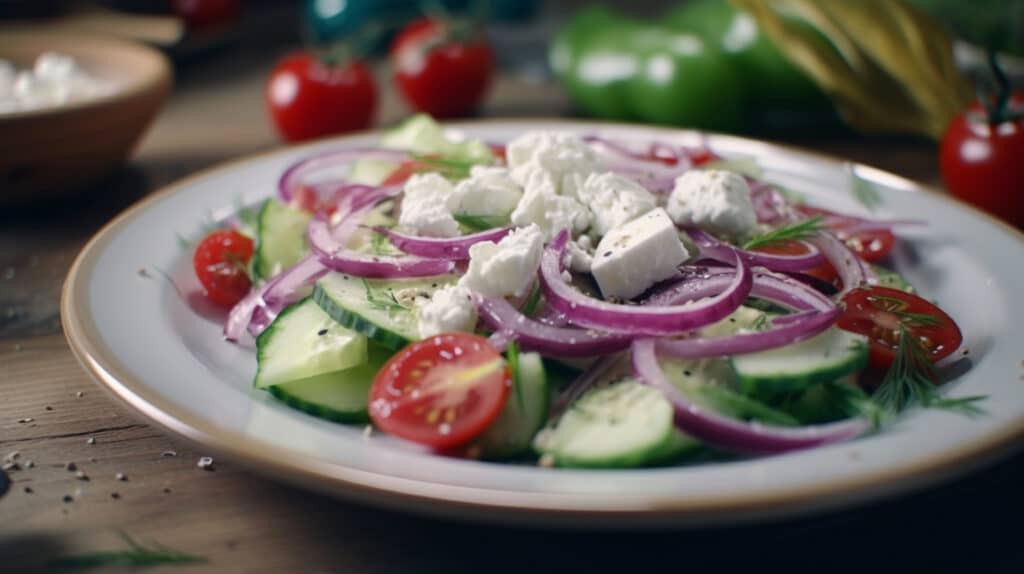
As someone who’s happily immersed in Bulgarian culture, I can attest to the fact that Sirene cheese is the star of many traditional dishes. This versatile cheese adds a delightful flavor and texture to a variety of recipes that are sure to make your taste buds dance. Here are some iconic Bulgarian dishes that feature Sirene cheese:
- Shopska Salad: A refreshing, colorful salad that’s perfect for warm summer days. Chopped tomatoes, cucumbers, bell peppers, onions, and parsley are combined and topped with a generous helping of crumbled Sirene cheese. Simple, healthy, and utterly delicious!
- Banitsa: A beloved Bulgarian pastry that’s perfect for breakfast, lunch, or dinner. Layers of thin, flaky filo dough are filled with a mixture of whisked eggs and crumbled Sirene cheese. The pastry is then baked to golden perfection, resulting in a heavenly combination of crispy, buttery layers and a savory, cheesy filling.
- Sirene Po Shopski: A mouthwatering dish that’s perfect for cheese lovers. Sirene cheese, tomatoes, and peppers are arranged in a clay pot, topped with an egg, and then baked until the cheese is melted and the egg is set. Serve it hot with a slice of crusty bread for an unforgettable experience.
- Kyopolou: A delicious Bulgarian appetizer made from roasted eggplants, red bell peppers, and garlic, all mashed together and seasoned with various herbs and spices. The dish is traditionally served with a generous sprinkle of crumbled Sirene cheese on top.
- Tarator: A cold, yogurt-based soup that’s both refreshing and satisfying. Made with yogurt, cucumbers, garlic, dill, and water, this light soup is often garnished with a sprinkling of Sirene cheese for a delightful salty contrast.
So, there you have it – some of the most iconic Bulgarian dishes that showcase the irresistible charm of Sirene cheese. Give these recipes a try, and you’ll understand why I can’t get enough of this scrumptious cheese!
Exploring the Diverse Varieties of This Bulgarian Delight
As a Sirene cheese aficionado, I can tell you that not all Sirene cheeses are created equal. This heavenly cheese comes in a range of delightful varieties, each with its unique flavor and texture profile. Here’s a quick guide to some of the most popular types of Sirene cheese:
- Cow’s Milk Sirene: Made from cow’s milk, this version of Sirene cheese has a milder, creamier taste. It’s perfect for those who prefer a more subtle, less tangy flavor.
- Sheep’s Milk Sirene: Crafted from sheep’s milk, this variety boasts a stronger, more distinctive taste. With its slightly crumbly texture and sharper flavor, it’s a favorite among Sirene cheese connoisseurs.
- Goat’s Milk Sirene: Made from goat’s milk, this type of Sirene cheese has a unique, earthy flavor. Its slightly tangy taste and crumbly texture make it an excellent choice for those who enjoy a bolder cheese experience.
- Mixed Milk Sirene: As the name suggests, this variety combines two or more types of milk, such as cow’s and sheep’s milk. The result is a cheese with a well-balanced flavor that brings out the best of both worlds.
- Smoked Sirene: For an extra layer of flavor, smoked Sirene cheese is cold-smoked to give it a subtle, smoky taste. It’s a great option for those who enjoy a more complex flavor profile.
With so many delicious varieties to choose from, it’s no wonder I’m head over heels for Sirene cheese! Now that you’re familiar with the different types, it’s time to explore where to buy this irresistible Bulgarian delicacy in the US. Happy cheese hunting!
The Best Places to Buy Sirene Cheese in the US

If you’re as smitten with Sirene cheese as I am, you’ll be thrilled to know that finding this scrumptious cheese in the US is easier than you might think! With a little bit of determination and a healthy appetite, you’ll be enjoying your favorite Bulgarian treat in no time. Here are some top spots to look for Sirene cheese in the US, both locally and online:
Local Stores:
- Specialty Cheese Shops: Keep an eye out for specialty cheese shops in your area. These treasure troves of cheesy goodness often stock a wide range of imported cheeses, including Sirene.
- International Markets: Many cities have international markets that carry products from various countries. Check out the European or Eastern European section to see if they carry Sirene cheese.
- Farmers’ Markets: If you’re lucky, you might come across a local cheese-maker selling their artisanal Sirene cheese at a farmers’ market. Be sure to grab some while you can – it doesn’t get fresher than that!
Online Stores:
Here at Cook Gem I have put together a comprehensive list of places where you can buy Bulgarian food online, including Sirene cheese. This helpful resource provides a wide range of online stores, giving you plenty of options to choose from. It’s a fantastic starting point for your Sirene cheese hunt, so be sure to check it out!
Armed with this insider knowledge, you’re well on your way to enjoying the delightful taste of Sirene cheese in the US. Happy cheese shopping! Let’s dig into more detail about how the FDA views this cheese.
Plan B for Sirene Lovers: Top Cheese Substitutes for Your Bulgarian Cravings
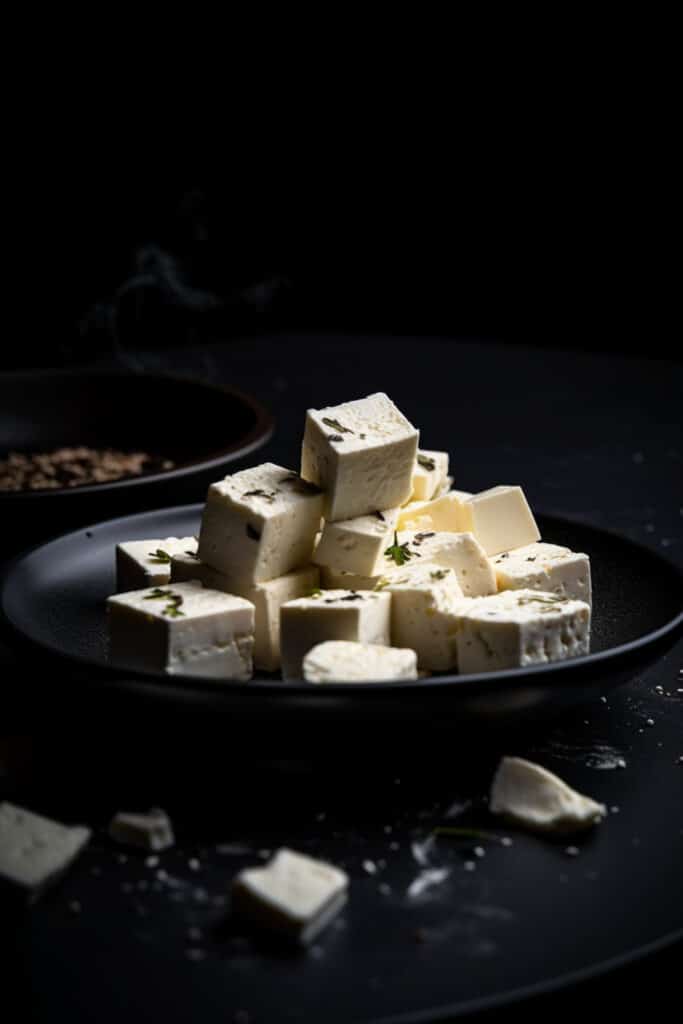
Let’s face it – sometimes, life doesn’t go as planned, and you might find yourself in a Sirene cheese drought. Fear not, fellow cheese enthusiasts! I’ve got you covered with some top-notch Sirene cheese substitutes that’ll keep your Bulgarian-inspired dishes alive and delicious:
- Feta Cheese: As Sirene cheese’s Greek cousin, feta is perhaps the most popular substitute. With a similar tangy flavor and crumbly texture, feta will do the trick in most recipes that call for Sirene cheese. Opt for a high-quality sheep’s milk feta for the most authentic taste.
- Queso Blanco: This mild, unaged white cheese hails from Latin America and has a similar texture to Sirene cheese. While its flavor is milder, it can still work as a decent stand-in when you’re in a pinch.
- Halloumi: Although halloumi has a firmer texture than Sirene cheese, its slightly salty taste makes it an acceptable alternative. Try frying or grilling it for a unique twist on your favorite Bulgarian dishes.
- Cotija Cheese: This Mexican cheese has a crumbly texture and tangy flavor, making it a suitable replacement for Sirene cheese in some dishes. It’s best used as a topping or garnish, rather than a primary ingredient.
- Farmer’s Cheese: A soft, mild cheese that can be easily crumbled, farmer’s cheese is a versatile option that can work well as a Sirene cheese substitute. It may not have the same tanginess, but it will still give your dishes a delightful cheesy touch.
While these substitutes might not perfectly replicate the unique taste of Sirene cheese, they’ll certainly help you get through those Sirene-less days. Keep this list handy for those emergency cheese situations, and remember – it’s always worth searching for the real deal when you can!
Sirene Cheese Storage & Serving Tips
So, you’ve managed to get your hands on some heavenly Sirene cheese – congrats! Now, let’s make sure you’re treating it with the love and care it deserves. Proper storage and serving techniques will ensure your Sirene cheese remains fresh, delicious, and ready to impress your taste buds. Here’s a quick guide to help you become a Sirene cheese connoisseur:
Storage Tips:
- Fridge Friendliness: Store your Sirene cheese in the refrigerator, ideally between 35°F and 40°F (2°C and 4°C). This will keep it fresh and flavorful.
- Wrap It Up: Wrap your Sirene cheese in wax or parchment paper, followed by a layer of plastic wrap or a sealable plastic bag. This helps maintain the cheese’s moisture while allowing it to breathe.
- Cheese Companions: Keep your Sirene cheese away from strong-smelling foods, as it can absorb odors. You don’t want your cheese tasting like last night’s leftovers!
- Shelf Life: Sirene cheese typically lasts for up to two weeks in the fridge when properly stored. However, always check for signs of spoilage, such as off smells or mold, before consuming.
Serving Tips:
- Temperature Tango: Remove your Sirene cheese from the fridge about 30 minutes before serving. Allowing it to come to room temperature will enhance its flavor and texture.
- Slice and Dice: Use a sharp knife to cut your Sirene cheese into bite-sized cubes or crumbles, depending on your preference and the dish you’re preparing.
- Pairing Perfection: Sirene cheese pairs wonderfully with fresh tomatoes, cucumbers, olives, and crusty bread. Don’t forget a glass of Bulgarian wine or a cold beer to complete the experience!
With these storage and serving tips under your belt, you’re all set to enjoy your Sirene cheese like a true Bulgarian cheese aficionado.

Well, folks, we’ve embarked on quite the cheesy journey together – from the origins and unique characteristics of Sirene cheese to sourcing, storing, and savoring this Bulgarian delight. It’s clear that Sirene cheese deserves a place in the hearts (and stomachs) of cheese lovers across the US.
As a Sirene cheese enthusiast (and proud partner of a Bulgarian), I can confidently say that this tangy, crumbly treasure is worth seeking out and sharing with friends and family. Whether you’re whipping up a Shopska salad or indulging in a scrumptious Banitsa, you’ll quickly understand why Sirene cheese is a beloved staple in Bulgarian cuisine.
So, go forth and spread the word about Sirene cheese, my fellow cheese aficionados! Introduce this Bulgarian gem to your cheese boards, dinner parties, and culinary experiments. And remember, while substitutes can help in a pinch, nothing quite compares to the real deal.
Here’s to the appreciation and enjoyment of Sirene cheese in the US – may it bring joy, flavor, and a touch of Bulgarian charm to your life. Cheers and Наздраве!

